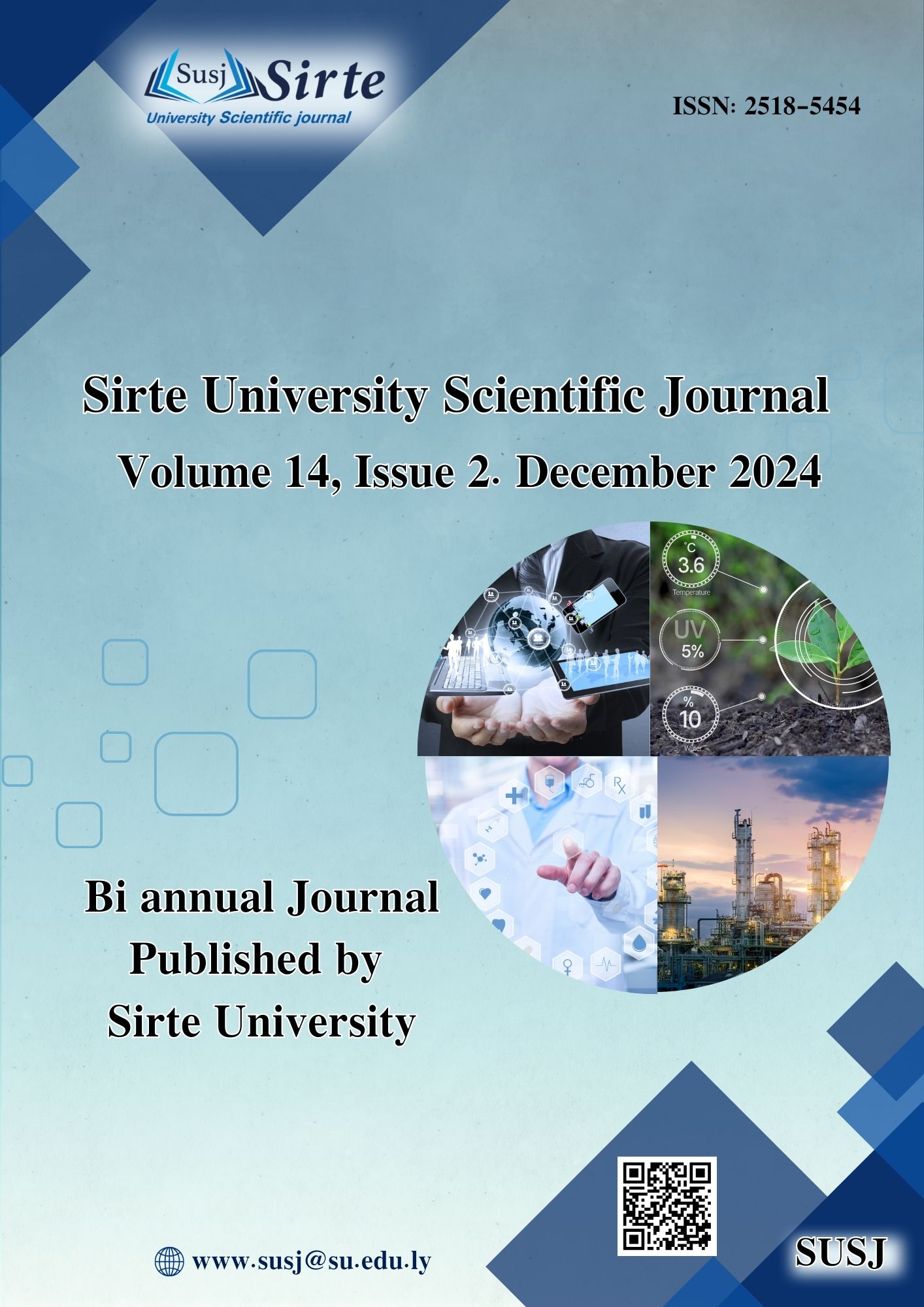Utilizing Artificial Neural Networks for Wind Speed Estimation A Case Study of Dernah City, Libya
DOI:
https://doi.org/10.37375/susj.v14i2.3096الكلمات المفتاحية:
Renewable energy، ANN، Levenberg-Marquardt Method، electrical energy، Wind Speedالملخص
Electric power is universally acknowledged as a crucial factor in enhancing living standards. As a result, safe electrical energy consumption is crucial to efficient national energy management. To do this, meticulous assessments of the electricity demand are required. Finding viable sites for turbine placement through feasibility studies and measuring local wind speeds are essential steps before establishing the plant wind power. Estimation of wind speed and simulations can be used to conduct these evaluations.. This study uses an artificial neural network (ANN) with the Levenberg-Marquardt (LM) learning algorithm to estimate wind speed for the Libyan city of Dernah. One-year data from the Libya Meteorology Center has been utilized to train, test, and validate the ANN to to predict hourly wind speed . The structure of the ANN was evaluated with neuron counts of 10, 20, 30, 40, and 50, allowing us to determine the optimal number of neurons for accurate predictions. The estimation analysis was performed using results obtained from the Levenberg-Marquardt method (LMA), along with the mean square error (MSE) and the coefficient of determination (R²). The results show that the Levenberg-Marquardt method with 10 neurons performs the best, with values of 0.99661 for R2 and 0.000250 for MSE. These findings confirm that wind speeds can be calculated within reasonable bounds since they show that the estimates of wind speeds based on the scant meteorological data available nearly match the measured values.
المراجع
Li, G., & Shi, J. (2010). On comparing three artificial neural networks for wind speed forecasting. Applied Energy, 87(7), 2313-2320.
Abohedma, M. B., & Alshebani, M. M. (2010). Wind load characteristics in Libya. International Journal of Civil and Environmental Engineering, 4(3), 88-91.
De Freitas, N. C., Silva, M. P. D. S., & Sakamoto, M. S. (2018). Wind speed forecasting: a review. Int. J. Eng. Res. Appl, 8, 4-9.
Kariniotakis, G., Pinson, P., Siebert, N., Giebel, G., & Barthelmie, R. (2004, October). The state of the art in short term prediction of wind power-from an offshore perspective. In SeaTech week-ocean energy conference ADEME-IFREMER., 12(2): 9-8.
Fu, L. M. (2003). “Neural networks in computer intelligence”, Tata McGraw-Hill Education, New York, USA, 34-41.
Mohamed, A. A., & Elmabrouk, A. M. (2009). Assessment of the wind energy potential on the coast of Tripoli. Nasser University, Faculty of Engineering, Mechanical Department, 1-10.
Mohamed, O. A., & Masood, S. H. (2018, June). A brief overview of solar and wind energy in Libya: Current trends and the future development. In IOP Conference Series: Materials Science and Engineering (Vol. 377, No. 1, p. 012136). IOP Publishing.
More, A., & Deo, M. C. (2003). Forecasting wind with neural networks. Marine structures, 16(1), 35-49.)
Imrie, C. E., Durucan, S., & Korre, A. (2000). River flow prediction using artificial neural networks: generalisation beyond the calibration range. Journal of hydrology, 233(1-4), 138-153.
Demuth, H., Beale, M., & Hagan, M. (1992). Neural network toolbox. For Use with MATLAB. The MathWorks Inc, 2000.
Arora, J. K., & Srivastava, S. (2010, June). Neural network modeling and simulation of sorption of Cd (II) ions from waste water using agricultural waste. In Proceedings of the world congress on engineering (Vol. 3, pp. 1-4).
Buaisha, M., BALKU, Ş., & YAMAN, Ş. Ö. (2019). ANN-assisted forecasting of adsorption efficiency to remove heavy metals. Turkish Journal of Chemistry, 43(5), 1407-1424.
Bulut, M., Tora, H., & Buaisha, M. (2021). Comparison of three different learning methods of multilayer perceptron neural network for wind speed forecasting. Gazi University Journal of Science, 34(2), 439-454.





